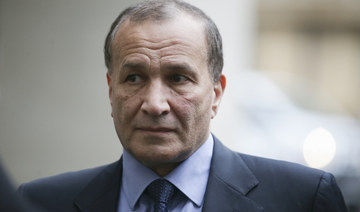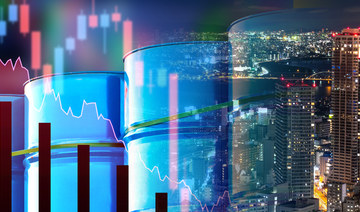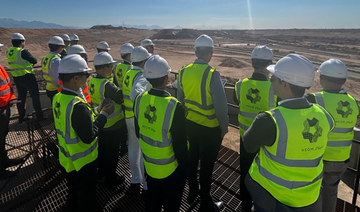DUBAI: The story of Azizi Developments transcends its journey from a plot of land in 2007 to more than 200 projects today.
Since then, the company has delivered 8,200 homes, worth over $12 billion.
In the words of Farhad Azizi, the CEO of Azizi Developments, it is as much about the “opportunity to actively contribute to the development of Dubai” and to grow as part of such an “awe-inspiring” city.
“Much like this Emirate, which we call our home, we have grown very rapidly,” said Farhad, who has been the driving force behind the company's strategy.
In the process, Azizi has had to adapt to market trends and the crests and troughs of the property market. Over a decade spent in banking, construction, oil, gas and hospitality came in handy while steering the Azizi ship.
“We launched our first development in 2008, selling over $1 billion worth of properties,” he said. It was to be the beginning of a remarkable journey that was rudely interrupted by the collapse of property prices.
“In July and August of 2008, our clients approached us, gravely concerned that they were unable to continue their payments,” said Farhad.
Like other real estate developers, Azizi received many requests for projects to be stopped and for deposits to be returned.
Azizi investigated every case individually with the help of the Dubai Land Department and handed back all deposits.
“Despite all the chaos occurring around us, we are proud to say that we were one of the very few developers to have done this.
“We returned a total of 149 million dirhams ($40.565 million) that was already spent on design, marketing, and land payments, and that was not sourced from an escrow account, as a gesture of goodwill,” he said.
The period of turbulence, however, had some important lessons, and smart operators emerged stronger. “The most important lesson we have learned from the crisis is to prioritize our customers, at all times,” added Farhad.
“Naturally, when purchasing power decreases, customers become more selective and meticulous in their purchase decision-making process. Those with strong products prosper, and those with offerings that do not meet needs adequately suffer.”
Farhad stands by the much-maligned off-plan property market, calling it a matter of trust.
“In today’s world of immediate knowledge transfer, where social media posts and review sites enable customers to inform themselves and shape their image of a business, transparency is the absolute key to building trust.”
Besides, what matters most is a strong return on investment. “Only research-driven companies that leverage the latest technologies will innovate and prosper.”
Like most other companies in this business, Azizi is also pinning hopes on Expo 2020, which is expected to be a key driver for the real estate sector and the economy as a whole.
“As the first-of-its-kind mega-event hosted in the region, welcoming over 25 million visitors, it will boost the economy by over 3.5 percent,” Farhad added.
His optimism is based on the fact that a lot of Azizi projects have accessibility to the Expo 2020 site, which will continue to grow as a vibrant leisure and business destination even after the event.
Farhad also has an interesting theory on millennial buyers. He believes, with 60 percent of the region’s population now below the age of 30, millennial professionals are the most important demographic.
“While our research finds that young professional millennials are often anxious and have a fear of commitment, they are becoming increasingly aware of the benefit of moving from home renting to ownership,” he said.
They are, he believes, realizing that renting only helps pay someone else’s mortgage, when they could turn the expense, or “dead investment” of rental payments, into installments toward a profitable asset.
“For example, while renting costs for 20 years can amount to upwards of 2.16 million dirhams, buying a similar property in the same location would cost just over 1.76 million dirhams, not to forget that the investor then owns a valuable, lucrative asset after the 20-year period, once the mortgage is paid off.”
Farhad also has a special mention for Saudi investors who, according to him, stand out for being investment savvy. “They inform themselves extremely well of the different locations, the planned infrastructure and amenities.”
So what does the future have in store for Azizi Developments? For a start, Farhad is confident that since Dubai has one of the fastest-growing populations in the world, market absorption rates will withstand the supply.
“By the end of 2019, we aim to complete approximately 4,000 units. We have dedicated this year to the swift development and timely completion of our projects.”
Azizi chief believes Dubai demand will absorb coming housing supply
Azizi chief believes Dubai demand will absorb coming housing supply
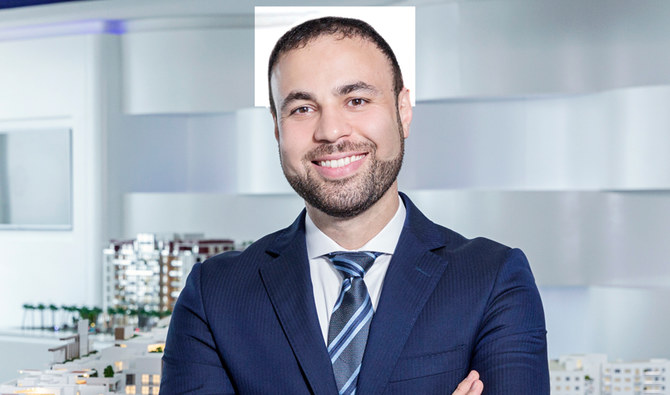
- CEO pinning hopes on Expo 2020, which is expected to be key driver for real estate sector and economy as a whole
Oil Updates – crude stabilizes after sharp drop on demand concerns, easing of Middle East tension
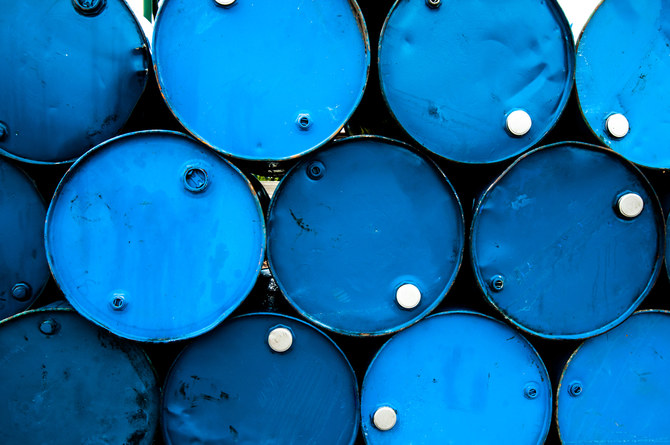
NEW DELHI: Oil prices were little changed after a 3 percent drop in the previous session as the market remains concerned about demand this year and on signs that a wider conflict in the key Middle East producing region could be avoided, according to Reuters.
Brent futures were up 13 cents, or 0.15 percent, at $87.42 a barrel, while US West Texas Intermediate crude futures traded 6 cents higher, up 0.07 percent, at $82.75 a barrel at 9:36 a.m. Saudi time.
The two benchmarks slid 3 percent in the previous session on signs that fuel demand this year is lower than expected amid flagging economic growth in China and as oil inventories in the US, the world’s biggest crude consumer, rose.
Analysts at JP Morgan highlighted in a note late on Tuesday that worldwide oil consumption so far in April has been 200,000 barrels per day below its forecast, averaging 101 million bpd. From the start of the year, demand has risen by 1.7 million bpd, down from its forecast in November of 2 million bpd.
At the same time, investors are discounting the chance that Israel will strongly retaliate against Iran’s missile and drone attack on April 13, which was prompted by Israel’s alleged killing of Iranian military leaders at a Syrian diplomatic site on April 1.
Iran is the third-largest producer in the Organization of the Petroleum Exporting Countries, according to Reuters data, and an easing of its conflict with Israel would reduce the potential for supply disruptions in the Middle East.
“Brent is now back to levels before the April 1 attack on the Iranian consulate, suggesting that the latest bout of risk premium from heightened Israel-Iran tensions has eroded,” said Vandana Hari, founder of oil market analysis provider Vanda Insights.
Surging US crude inventories also kept a lid on prices. Oil inventories rose by 2.7 million barrels to 460 million barrels in the week ending April 12, the Energy Information Administration said, nearly double analysts’ expectations in a Reuters poll for a 1.4 million-barrel build.
Stockpiles built as refinery utilization declined at a time when processing typically rises ahead of summer driving demand in the US
Gasoline stocks fell by 1.2 million barrels in the week to 227.4 million barrels, the EIA said.
Distillate stockpiles, which include diesel and heating oil, fell by 2.8 million barrels to 115 million barrels, versus expectations for a 300,000-barrel drop, the EIA data showed.
“A bearish EIA inventory report appears to have been the perfect opportunity for investors to lock in profits after the recent gains,” Daniel Hynes, the senior commodity strategist at ANZ, said in a note on Thursday.
Saudi tourism fund signs MoU for development of resorts in Kingdom
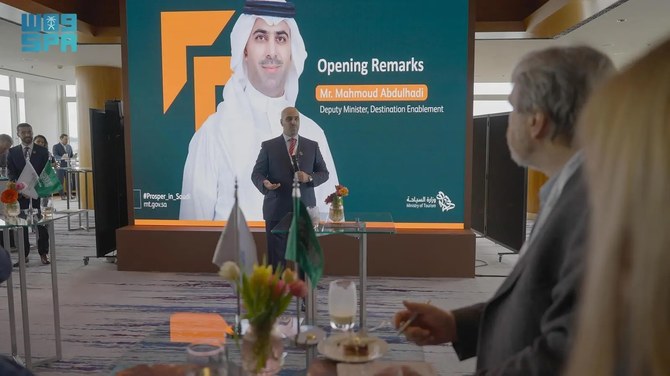
RIYADH: Saudi Arabia is set to witness the development of new luxury resorts as the Tourism Development Fund signed a memorandum of understanding with Karisma Hotels and Resorts International, the Saudi Press Agency reported.
The signing took place at the International Hospitality Investment Forum in Berlin on Wednesday. The MoU seeks to explore opportunities for developing resorts and enhancing new areas of the tourism and hospitality sector in the Kingdom.
The agreement outlines a roadmap to determining a methodology for investing and providing financial and non-financial support to a vibrant ecosystem of investors, clients, and partners.
“The Tourism Development Fund is unlocking a great potential with Karisma Hotels and Resorts as we join forces to explore the feasibility of funding and supportive innovative projects that will significantly contribute to the growth of the tourism sector,” SPA quoted TDF CEO Qusai Al-Fakhri as saying.
The fund aims to connect the world with opportunities in the Kingdom’s fast-growing tourism sector. It offers financial and non-financial support to international and local investors.
“We are proud to announce the company’s significant entrance into Saudi Arabia with multiple hotel developments throughout the Kingdom in collaboration with our partners and local developers. Karisma will introduce first-of-its-kind experiential leisure hotels in partnership with worldwide acclaimed brands, bringing a new offering of leisure vacations to the Kingdom,” Esteban Velasquez, CEO of Karisma Hotels and Resorts, said.
Saudi Arabia’s tourism sector has revised its 2030 target to 150 million visitors, up from the initial 100 million.
The tourism sector has become important to the national economy, as spending on tourism by domestic and international tourists exceeded SR250 billion ($66.7 billion) in 2023. The sector is set to contribute 10 percent to the non-oil gross domestic product and create 1 million job opportunities by 2030. This spending represented more than 4 percent of the Kingdom’s GDP and 7 percent of the non-oil GDP, highlighting the significance of the tourism sector to the Kingdom’s economy.
During a panel discussion, Mahmoud Abdulhadi, deputy minister of investment attraction, underscored the Kingdom’s potential opportunities for both international and local businesses to invest in the tourism industry.
He noted that the Hospitality Investment Enablers initiative, announced by the Ministry of Tourism within the Investment Enablers Program, is in line with Vision 2030's strategic goals
The top official said the initiative aims to increase and diversify tourism offerings, enhance the capacity of tourism hospitality facilities in tourist destinations, and attract private investments in the hospitality sector.
Closing Bell: TASI loses 34.45 points to close at 12,465
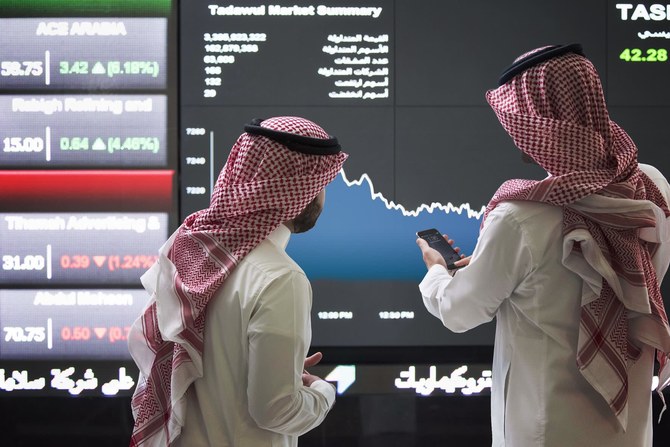
RIYADH: Saudi Arabia’s Tadawul All Share Index closed at 12,465.98 points on Wednesday, dipping 34.45 points or 0.28 percent.
The parallel market, Nomu, gained 92.53 points or 0.35 percent to close at 26,401.91.
Meanwhile, the MSCI Tadawul 30 Index also slightly declined 9.29 points or 0.59 percent to conclude at 1,569.13.
The main index posted a trading value of SR9.5 billion ($2.55 billion), with 96 stocks advancing and 131 declining.
Ash-Sharqiyah Development Co. was the top performer on TASI as its share price surged 9.95 percent to SR21.44. Batic Investments and Logistics Co. followed with its share pricing jumping 9.27 percent to close at SR2.83.
Saudi Ground Services Co. also performed well, climbing 9.09 percent to SR58.80. The Mediterranean and Gulf Insurance and Reinsurance Co. and Almunajem Foods Co. increased 8.53 and 6.32 percent to SR28 and SR117.80, respectively.
Conversely, Fawaz Abdulaziz Alhokair Co. recorded the most significant dip, declining 5.16 percent to SR11.40.
Astra Industrial Group and Etihad Etisalat Co. also experienced setbacks, with their shares dropping to SR175.40 and SR51.39, reflecting declines of 3.73 and 3.39 percent, respectively.
Saudi Chemical Co. and Saudi Real Estate Co. also reported significant losses of 3.08 percent and 2.88 percent to SR7.87 and SR22.22, respectively.
Nomu’s top performer was Future Care Trading Co., which saw a 10.68 percent jump to SR9.64.
Ladun Investment Co. and Mayar Holding Co. also recorded notable gains, with their shares closing at SR5.63 and SR4.10, marking an increase of 9.96 and 7.89 percent, respectively.
Lana Medical Co. and Al-Modawat Specialized Medical Co. also fared well, as their share price increased by 7.25 and 6.92 percent, closing at SR42.90 and SR151.40.
On Nomu, Alqemam for Computer Systems Co. was the worst performer, declining by 9.72 percent to SR90.10. Other underperformers included Saudi Parts Center Co. and Clean Life Co., whose share prices dropped 6.10 percent and 5.71 percent to SR60.0 and SR94.20, respectively.
Chinese businesses shown NEOM opportunities as ‘Discover’ tour hits Beijing, Shanghai
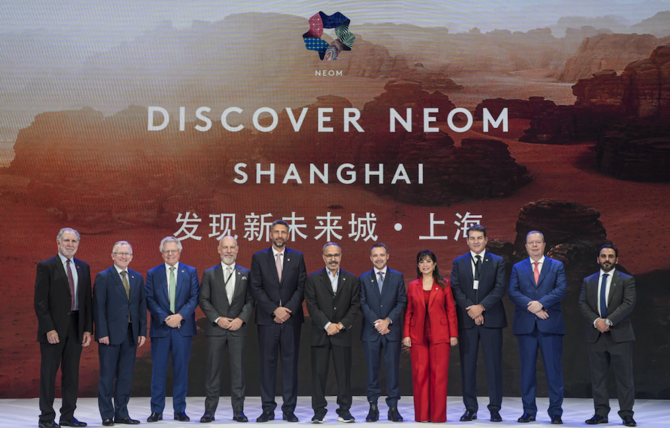
RIYADH: Opportunities for Chinese companies to engage with and invest in NEOM have been showcased in Beijing and Shanghai, attracting significant interest from several companies.
The giga-project kicked off the Chinese leg of its global “Discover NEOM” tour in the capital on April 15, followed by a visit to the country’s biggest city on April 17, attracting a cumulation of over 500 business and industry leaders.
Organized in partnership with the China Council for the Promotion of International Trade Beijing and CCPIT Shanghai, the events featured presentations by NEOM’s leadership team that highlighted on-the-ground progress and milestones, as well as detailed overviews of the initiative’s diverse economic sectors.
Numerous opportunities for Chinese companies to engage and invest in the advanced urban and economic zone were showcased during these gatherings, eliciting significant interest. Many companies expressed enthusiasm and discussed concrete next steps with NEOM’s leadership, according to a release.
“We are grateful to CCPIT Beijing and CCPIT Shanghai for supporting our visit to China and for the opportunity to present NEOM’s vision,” Nadhmi Al-Nasr, CEO of NEOM, said.
“To date, NEOM has already engaged with over 15 major Chinese businesses and invested in a number of Chinese startups to support the growth and diversification of NEOM. Collaboration with China will continue to play a vital role in the development of NEOM, and we look forward to strengthening our engagement with the country’s business community,” he added.
Over 100 Chinese building companies participated in the event’s construction-focused forum, which presented many collaboration opportunities.
Furthermore, the private showcase, “Discover NEOM: A New Future by Design,” was a highlight of the events.
It offered guests an immersive experience exploring NEOM’s developments. These included THE LINE, a 170-km-long city designed as the future of urban living; Oxagon, which is reshaping the traditional industrial model; Trojena, NEOM’s mountain resort; and Sindalah, a luxury island destination in the Red Sea set to open later this year.
“Both Beijing and NEOM are accelerating the development of new modes of productivity, deepening comprehensive reforms, promoting scientific and technological innovation, and working to ensure the protection of our environment,” Guo Huaigang, chairman of CCPIT Beijing, said.
“We look forward to the role our cooperation can have in Beijing’s future prosperity,” he added.
Expressing Shanghai’s interest in fostering its relationship with Saudi Arabia, Zhao Zhuping, deputy secretary general of the Shanghai Municipal Government, stated that the entity looks forward to deepening mutually beneficial engagement with NEOM.
“Discover NEOM China” marks the latest installment of NEOM’s global roadshow, following engagements in major international cities such as Seoul, Tokyo, and Singapore, as well as New York, Boston, and Miami.
Paris, Berlin, and London have also been visited by the expedition.
Saudi crude production hits 7-month high in February
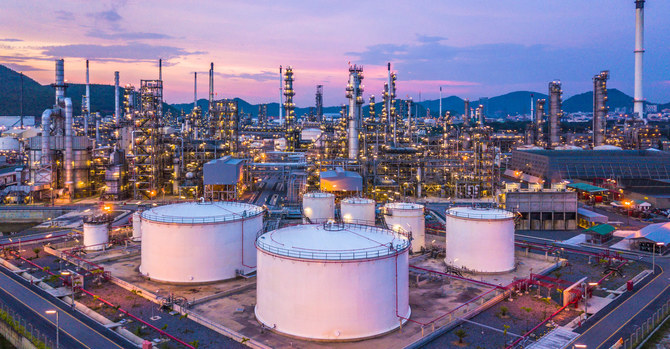
- The Kingdom’s crude exports rose to 6.32 million bpd or 0.32 percent: JODI data
RIYADH: Saudi Arabia’s crude production reached a seven-month high of 9.01 million barrels per day in February, data from the Joint Organizations Data Initiative showed.
This represented a rise of 55,000 bpd or 0.61 percent compared to the previous month.
Furthermore, the data indicated that the Kingdom’s crude exports rose to 6.32 million bpd, reflecting a monthly increase of 0.32 percent.
In early April, the Organization of the Petroleum Exporting Countries and its allies, known as OPEC+, chose to keep their existing output policy unchanged as oil prices hit a five-month high.
Led by Saudi Arabia and Russia, OPEC+ extended voluntary output cuts of 2.2 million bpd until June to bolster the market. The decision was reached during the 53rd meeting of the Joint Ministerial Monitoring Committee on April 3.
Oil prices surged due to supply constraints, attacks on Russian energy infrastructure, and conflicts in the Middle East, with Brent crude exceeding $89 a barrel.
This extension of cuts, alongside voluntary reductions announced in April 2023, including 500,000 bpd cuts from both Saudi Arabia and Russia, now extends through December of this year.
As a result of this decision, despite the monthly increase, crude output remains approximately 14 percent lower than the levels observed during the same month last year.
The next JMMC meeting is scheduled for June 1.
Refinery output
Meanwhile, refinery crude output, representing the processed volume of crude oil yielding gasoline, diesel, jet fuel, and heating oil, surged to a five-month high. It increased by 10 percent compared to the previous month, reaching 2.68 million bpd, according to JODI data. This also marked a 10 percent increase from the 2.44 million bpd recorded during the same period last year.
As one of the world’s leading oil producers, Saudi Arabia plays a crucial role in supplying these refined products to meet global energy demands.
In February, diesel, constituting 38 percent of the total output, declined by 7 percent to 1.02 million bpd, with its percentage share decreasing from 45 percent in January. Motor aviation or jet fuel maintained a 22 percent share, experiencing an 11 percent increase to 597,000 bpd. Meanwhile, fuel oil, making up 17 percent of the total refinery output, saw a slight uptick of 0.22 percent, totaling 455,000 bpd.
Conversely, refinery output exports surged to a 10-month high, reaching 1.39 million bpd, a 12 percent monthly increase. The most significant rise was observed in motor and aviation oil, up by 45 percent to 275,000 bpd. Fuel oil exports followed with a 38 percent increase to 219,000 bpd, while diesel oil saw a 13 percent rise to 629,000 bpd.
In February, 62 percent of refinery diesel oil output was exported, marking the highest percentage in eight months. Fuel oil and motor and aviation gasoline followed suit with export percentages of 48 percent and 46 percent, respectively.
Direct crude usage
Saudi Arabia’s direct burn of crude oil, involving the utilization of oil without substantial refining processes, experienced an increase of 52,000 bpd in February, representing a 17 percent rise compared to the preceding month. The total direct burn for the month amounted to 360,000 bpd.
The Ministry of Energy aims to enhance the contributions of natural gas and renewable sources as part of the Kingdom’s goal to achieve an optimal, highly efficient, and cost-effective energy mix.
This involves replacing liquid fuel with natural gas and integrating renewables to constitute approximately 50 percent of the electricity production energy mix by 2030.




